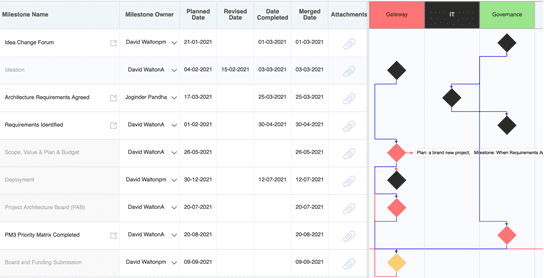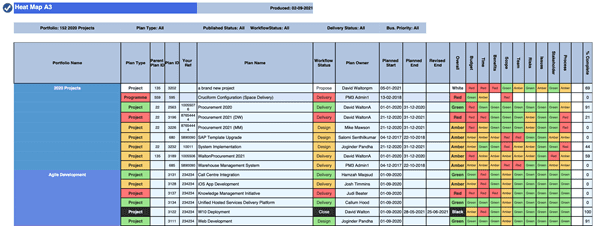Digital disruption has been a thing for decades but recently it moved into the fast lane and put it’s foot down. Few of the changes that occurred in the last 2 years are fundamentally new but the scale and speed of change leaves more than a few of us still trying to understand the new ways of working. Home working, video conferencing and instant messenger have become the norm and they’re not going back in the box.
Deloitte published 2 interesting studies on how workers reacted to the changes https://www2.deloitte.com/uk/en/pages/consulting/articles/working-during-lockdown-impact-of-covid-19-on-productivity-and-wellbeing.html and how they view the future of work https://www2.deloitte.com/uk/en/pages/consulting/articles/state-of-the-worker-a-year-in-the-pandemic.html. The new normal is with us to stay!
All this change upsets practices evolved and nurtured over decades and here are some ways for the PMO to adapt to the new paradigm and help others do so:
Once upon a time, project team members were allocated to a project full time (and often for the duration of the project) because it was too hard to do it differently. Now it’s possible, and essential to be more flexible about the way resources are used.
With a resource management system linked to your project scheduling, you can allocate the right people at the right time to the right work. And by planning projects by role initially, you can balance allocation to maximise resource utilisation. It’s also useful to match specific skills needed for the role with the skills of people in the pool to get the best fit.
How specific do you make the allocation? Personally, I favour assignments in days per week. It requires the project manager to review resource plans on a regular basis but without making a chore of it. From an organisation level, you can keep the planning horizon small to start and gradually look further and further forward to help analyse resources needed in the future.
Fundamentally, a sponsor or stakeholder wants to know if a project is going to be successful. Once they could look you in the eye and hear you explain the project, now they get a plan that is supposed to tell them the story.
Whilst you can describe that plan in words, it will land a lot quicker and stronger if you add a combination of images that help convey the feelings that accompany the project and visualisations that explain the detail. An image of a happy nurse next to text about changing working conditions helps to set the scene and keep the reader’s attention. A chart showing the cost/benefit timeline explains to the reader a lot about what to expect and when it will happen in ways that are hard to convey in words. A high-level milestone plan or chart will convey the health of a project quicker than a detailed Gantt chart.
These are not tricks to beguile the audience but tools to help engage stakeholders in the ‘project story’. Without the face-to- face interaction, these visualisations are important to convey project progress, outcomes and the true health of the project.

Projects are complex and reasons for not delivering to plan numerous. However, if you look at the whole portfolio you should see a static (or even improving) set of KPIs. The number of red milestones on a single project will fluctuate but % of red milestones in the portfolio should be fairly consistent over weeks and, when you remove the noise, should give a good indication of delivery health (especially when combined with risk, issue and plan status).
Of course, this won’t tell you WHY things are getting better (or worse) but they can give you a timeline to compare with PPM improvements and environmental factors.

In a future article, I’ll talk about just in time reporting and breaking the reporting paradigm but there are several ways of reducing the effort of communication whilst improving the volume and frequency of status updates.
Automated reports enable the project and programme managers to keep their key stakeholders informed with little additional effort. Keep the reports simple, less to check and less to read, and send out on a weekly basis. Ideally, run on Sunday night so that they are at the top when the audience open their mail on Monday morning! Our PPM tool, PM3, has automated reporting.
Disruption presents a number of challenges but it can also be an opportunity to change practices and behaviours that will make life easier as you go forwards. Sometimes an external event like Covid will drive different ways of working and the PMO needs to adapt to this shift in working practices. These external events can be a catalyst to improved ways of working. Trying to work in ‘old ways’ and not embracing the change in work habits is, at best, a missed opportunity and, at worst, a route to poor communication and project failure.
BestOutcome develop and market PM3, the award-winning PPM tool. PM3 is used both for enterprise PMO solutions and PMOs with small number of projects.
For more information on PM3, please contact us at: info@bestoutcome.com or visit our website:

Our products help you deliver successful change programmes and projects by always focusing on the overall business outcomes. Find out how our products can help you.
Tell me more Watch a Demo